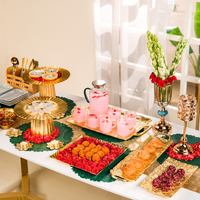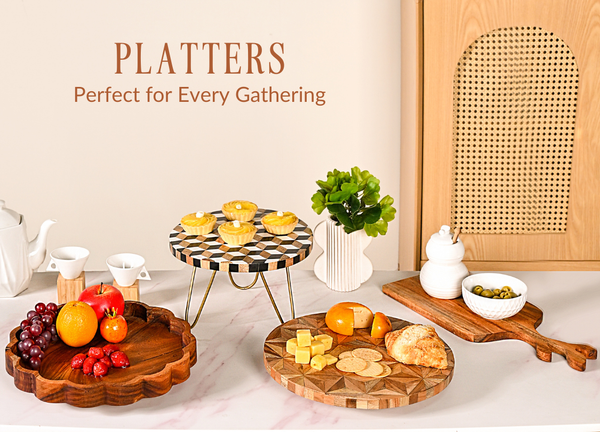Interior design, an art and science aimed at enhancing the interiors of a space, is deeply influenced by various factors. Among these, cultural and social elements play a pivotal role. They shape not only the aesthetics but also the functionality and symbolism of interior spaces. Understanding these influences helps us appreciate the diversity of design and its relevance to our daily lives.

Understanding Cultural Influences
1. Historical Context
History is a rich source of inspiration for interior design. Different eras bring unique styles that reflect the socio-political and economic conditions of the time.
A. Victorian Era
The Victorian era, spanning from the mid to late 19th century, is known for its opulent and intricate designs. This period saw the use of dark woods, such as mahogany and oak, along with heavy, luxurious fabrics like velvet and brocade. Intricate patterns and motifs were common in wallpapers and textiles. The style reflects the wealth and industrial progress of the time, characterised by a blend of Gothic, Rococo, and Renaissance influences.
Visit: https://nestasia.in/collections/vintage-wonder

B. Mid-Century Modern
Originating in the mid-20th century, this design style emphasises simplicity, functionality, and clean lines. It features natural forms and materials, with a preference for open spaces and minimal ornamentation. Influenced by the post-World War II era, the mid-century modern design focuses on practicality and affordability, incorporating materials like plastic, plywood, and aluminium.
Also visit: https://nestasia.in/collections/modern-contemporary

2. Regional Styles
Different regions of the world have distinct interior design styles rooted in their traditions, climate, and available materials.
A. Japanese Minimalism
This style is characterised by simplicity, natural elements, and a focus on harmony and balance. It draws heavily from Zen Buddhism and the traditional Japanese appreciation for nature. Interiors often feature tatami mats, sliding shoji screens, and minimal furniture, creating a serene and uncluttered environment.
Read: Exploring Global Decor: Infuse Cultural Elements Into Your Interior Design

B. Moroccan Design
Moroccan design is known for its vibrant colours, intricate tilework, and elaborate textiles. Influenced by a rich history of craftsmanship and diverse cultural elements from Arab, Berber, and Mediterranean traditions, Moroccan interiors often include detailed mosaic patterns, arched doorways, and richly textured fabrics.
Also visit: https://nestasia.in/collections/soft-furnishings

3. Religious And Spiritual Beliefs
Religious and spiritual beliefs often dictate the design of spaces meant for worship and meditation, but they can also influence residential interiors.
A. Feng Shui
This ancient Chinese practice involves arranging spaces to promote the flow of positive energy (chi). Feng Shui principles can impact everything from the placement of furniture to colour choices, aiming to create a harmonious and balanced living environment.
Read: A Beginner’s Guide To Feng Shui

B. Vastu Shastra
Similar to Feng Shui, Vastu Shastra is an ancient Indian architectural science that governs design principles for homes and buildings. It emphasises spatial arrangements, orientation, and the use of natural elements to promote harmony and well-being. This design often incorporates motifs and symbols from Hindu mythology, such as lotus flowers, peacocks, and deities, imbuing spaces with cultural significance and spiritual meaning.
Read: Choosing Paintings for Living Room Vastu: Tips and Ideas

Social Factors And Interior Design
1. Family Structure And Lifestyle
A. Multi-Generational Homes
These homes need flexible spaces that can cater to the needs of different age groups. This might include features like accessible bathrooms for the elderly, play areas for children, and communal areas that facilitate family gatherings, reflecting the importance of family in many cultures.
Read: 9 Simple Hacks To Revamp Your Home for Multigenerational Living

B. Urban Living
In densely populated cities, space-saving solutions become essential. This includes the use of modular furniture, open-plan layouts, and multi-functional spaces that can adapt to various needs, accommodating the fast-paced and space-constrained urban lifestyle.

2. Socio-Economic Status
A. Luxury Interiors
High-end materials like marble, designer furniture, and custom artwork are common in affluent homes. These elements not only reflect the owner's wealth and status but also provide a sense of exclusivity and sophistication.
Also visit: https://nestasia.in/collections/nest-luxe

B. Budget-Friendly Designs
These interiors often involve DIY solutions, repurposing items, and choosing affordable yet stylish alternatives. Budget-conscious designs focus on creativity and resourcefulness, proving that good design doesn't always require a large budget.
Read: 10 Tips For Revamping With What You Already Have

3. Technological Advancements
A. Smart Homes
Modern technology has revolutionised home design with the integration of smart home systems. These include automated lighting, smart thermostats, and home assistants that enhance convenience and efficiency, allowing homeowners to control various aspects of their home environment with ease.

B. Sustainable Design
With growing environmental awareness, sustainable design practices are increasingly popular. This involves using eco-friendly materials, energy-efficient solutions, and sustainable construction techniques to create environmentally conscious spaces that reduce the carbon footprint.
Also visit: https://nestasia.in/collections/sustainable-products

Cultural And Social Influences In Contemporary Design
1. Globalisation And Cultural Exchange
In today's interconnected world, cultural exchange plays a significant role in interior design. Designers draw inspiration from a global palette, blending styles and elements from different cultures to create unique and eclectic spaces.
A. Bohemian Style
Bohemian style is a blend of various cultural influences, characterised by vibrant colours, eclectic furnishings, and an emphasis on individuality. This style often incorporates elements from different ethnic traditions, resulting in a rich and diverse aesthetic that celebrates creativity and personal expression.

B. Scandinavian Design
Known for its simplicity, functionality, and minimalism, Scandinavian design has gained worldwide popularity and influenced modern interiors globally. It emphasises natural materials, neutral colours, and clean lines, creating a serene and practical living environment that aligns with the Scandinavian values of practicality and understated elegance.

2. Social Movements And Trends
Social movements and trends shape interior design by reflecting the changing values and priorities of society.
A. Sustainability Movement
Growing awareness of environmental issues has led to a rise in sustainable design practices. This includes using reclaimed materials, promoting energy efficiency, and choosing eco-friendly products, all aimed at reducing environmental impact and promoting a more sustainable lifestyle.
Read: Earthy Home Decor Ideas to Transform Your Space

B. Inclusivity In Design
There is a growing emphasis on creating spaces that are accessible and inclusive for people of all abilities. This involves incorporating features like ramps, wider doorways, and adaptive furniture, ensuring that spaces are welcoming and functional for everyone, regardless of physical limitations.

Case Studies: Cultural And Social Influence In Practice
1. Traditional Indian Home
A. Cultural Elements
Traditional Indian homes often use vibrant colours, intricate wooden carvings, and traditional textiles like silk and cotton. These elements reflect the rich cultural heritage and craftsmanship of India.

B. Social Factors
The design typically includes large communal spaces for extended family gatherings, reflecting the importance of family and community in Indian culture. Courtyards, verandas, and puja (prayer) rooms are common features.
Also visit: https://nestasia.in/collections/devotion
2. Scandinavian Apartment
A. Cultural Elements
Scandinavian apartments are characterised by minimalist design, the use of natural materials like wood and stone, and a neutral colour palette. These elements create a clean, functional, and aesthetically pleasing environment.
Also visit: https://nestasia.in/collections/wooden-decor
 B. Social Factors
B. Social Factors
The design emphasises functionality and simplicity, reflecting the Scandinavian values of practicality and understated elegance. Open-plan layouts, efficient storage solutions, and a connection to nature are key features.
3. Modern Urban Loft
A. Cultural Elements
Modern urban lofts often feature an industrial aesthetic with exposed brick walls, metal fixtures, and open spaces. This style reflects the history of urban industrial buildings repurposed for residential use.

B. Social Factors
Designed for young professionals, these lofts incorporate multifunctional furniture and smart home technology to accommodate a fast-paced lifestyle. The open-plan layout and minimalist decor create a sense of spaciousness and flexibility.
Conclusion
The influence of cultural and social factors on interior design is profound and multifaceted. By understanding these influences, you can create spaces that are not only aesthetically pleasing but also culturally relevant and socially responsive. Whether through the incorporation of traditional elements, the adaptation to modern lifestyles, or the embrace of global trends, interior design continues to evolve, reflecting the diversity and dynamism of human society.





















